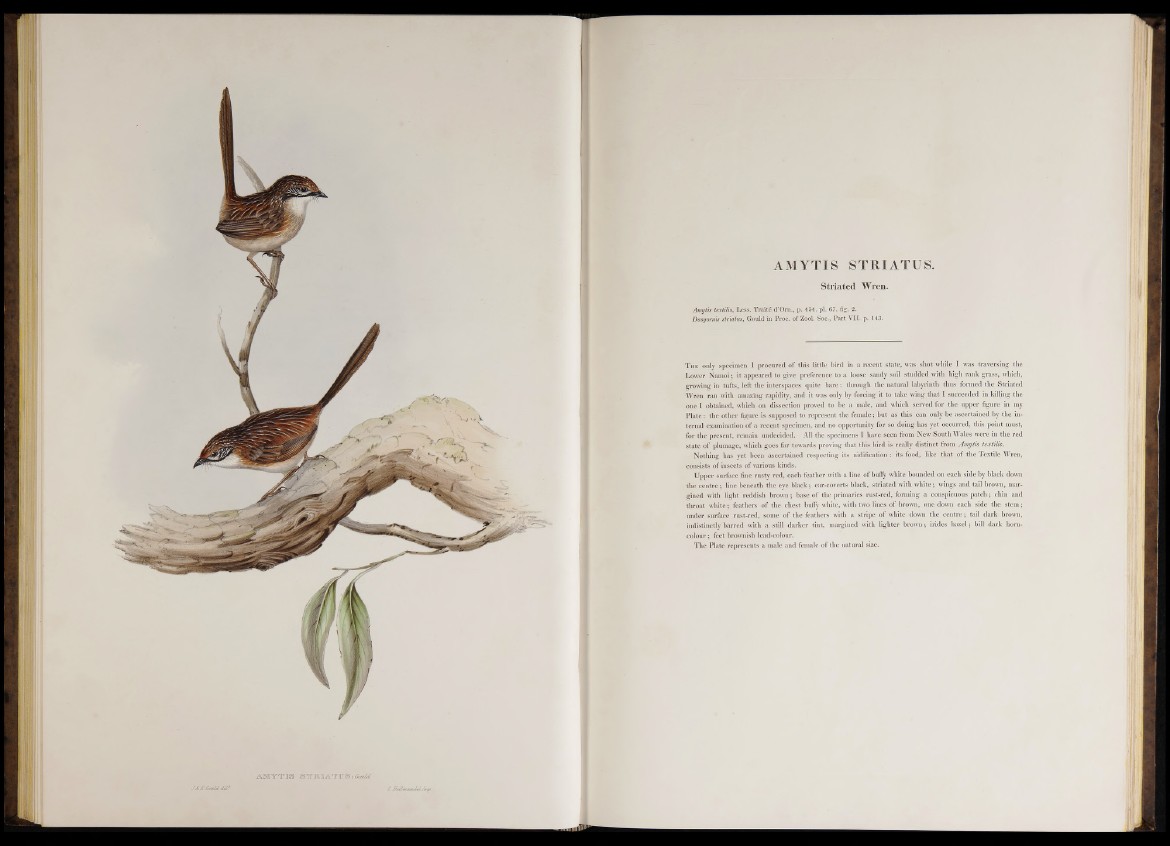
AMY T T S S T IR IA T IU S . Coidd.
J &Æ. G ould d d ? C, J fu llm tu io k l/m p .
r%
AMYTIS STRIATUS.
Striated Wren.
Amytis textilis, Less. Traité d’Om., p. 454. pi. 67. fig. 2.
Dasyornis striatus, Gould in Proc. of Zool. Soc., Part VII. p. 143.
T he only specimen I procured o f this little bird in a recent state, was shot while I was traversing the
Lower Namoi; it appeared to give preference to a loose sandy soil studded with high rank grass, which,
growing in tufts, left the interspaces quite bare: through the natural labyrinth thus formed the Striated
Wren ran with amazing rapidity, and it was only by forcing it to take wing that I succeeded in killing the
one I obtained, which on dissection proved to be a male, and which served for the upper figure in my
P late: the other figure is supposed to represent the female; but as this can only be ascertained by the internal
examination of a recent specimen, and no opportunity for so doing has yet occurred, this point must,
for the present, remain undecided. All the specimens I have seen from New South Wales were in the red
state of plumage, which goes far towards proving that this bird is really distinct from Amytis textilis.
Nothing has yet been ascertained respecting its nidification: its food, like that o f the Textile Wren,
consists of insects of various kinds.
Upper surface fine rusty red, each feather with a line o f buify white bounded on each side by black down
the centre; line beneath the eye black; ear-coverts black, striated with white; wings and tail brown, margined
with light reddish brown; base o f the primaries rust-red, forming a conspicuous patch; chin and
throat white; feathers o f the chest huffy white, with two lines o f brown, one down each side the stem;
under surface rust-red, some o f the feathers with a stripe o f white down the centre; tail dark brown,
indistinctly barred with a still darker tint, margined with lighter brown; irides hazel; bill dark horn-
colour ; feet brownish lead-colour.
The Plate represents a male and female of the natural size.